Five Elements of Life
Our Body is Made of Five elements orEnergy Force:
Jal (Water)
Prithvi (Earth)
Akash (Space) / Metal
Varun (Air) / Wood
Agni (Fire)
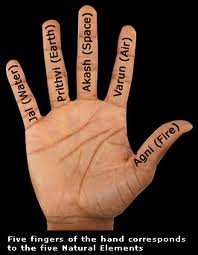
And they have 5 Productive, 5 Destructive and 5 Weaken relation with each other and we have to maintain the ratio with each other.
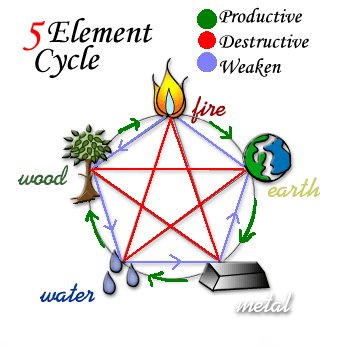
The five elementsor the five essential qualities oflife force energy, which can to enhance, control, or balance a space, depending on our needs:
Metalthe quality of shortening, sharpness, focus; when too strong, metal energy can make you sharp-tongued and critical
Waterthe quality of flowing, making relations; too much water energy can make you wishy-washy and indecisive
Woodthe quality of easy growth and progress; too much wood energy makes you aggressive or impatient, lacking compassion
Firethe quality of exhilaration, elaboration, adroitness; too much fire energy can leave you stressed out and anxious
Earththe quality of settling down, too much leads to psychological state, feeling stuck or weighed down
Each element can help you to increase or decrease the energy you want. When these five elements are understood well they play a important role in ourlife.

Element Shapes and Colors
Each element is associated with specific shapes and colors:
Metal silver, Grey; white, gold, round and oval shapes, arches
Waterblack and dark blues; sinuous, curvy, irregular, and wavelike shapes
Woodgreens and light blues; tall narrow shapes
Firereds, purples, bright oranges; triangles, flame shapes and other pointed or angular shapes
Earthbrowns, yellows, cool or muted oranges; low, flat, square shapes
So according to your needs use the color you want.
Elements and Objects
The material that something is made of is important, as well. Some obvious examples are:
Electric lightsfire
Pottery bowlearth
Brass clockmetal
Fish tankwater
Houseplants and flowerswood
5 Element Cycle:
All the five elements in Feng Shui are related with each other and lets see how they are inter related.
Metal produces water, Water nourishes wood, Wood feeds fire, Fire creates earth, and Earth produces metal and it is called the creative cycle.
The same can be applied in the reverse and this is called reducing cycle.
The five elements in Feng Shui are most important than anything else cause they are the things which decide the Feng Shui places in your living place. The Five elements in Feng Shui decides which element is necessary for your living place.
According to Feng shui, the correct usage of the five elements in your surroundings can bring a lot of benefits to your life. People have reported increase in wealth, love and improvement in health. The feng shui elements are each represented by a specific colour and shape and hence, colour and shapes are the easiest way to use the five elements principle to bring more harmony into your space with feng shui.
WHAT ARE THE ELEMENT COLOURS IN FENG SHUI?
The colour correspondence of each of the five feng shui elements is given here:
1.WOOD: Green, Brown
2.FIRE: Red, Strong Yellow, Orange, Purple, Pink
3.EARTH: Light Yellow. Sandy/Earthy, Light Brown
4.METAL: White, Gray
5.WATER: Blue, Black
HOW DO YOU USE THE RIGHT FENG SHUI COLOURS TO BALANCE YOUR ENVIRONMENT?
Knowing how to use colour to strengthen and balance your environment may be a complex feng shui subject, but the basics are explained here. The right placement of feng shui colours is defined by the Ba-Gua, or the feng shui energy map of your space. Each feng shui area of your house is associated with a specific aspect of your life, element and colour. In order to enhance the different aspects of your life, you should use the right colours and elements in each sector/direction of your house/workplace, as explained here:
SOUTH USE RED, PINK, PURPLE, YELLOW, ORANGE FOR FAME AND RECOGNITION : The energy of the South feng shui area is connected to your Fame and Recognition. The feng shui element of South is Fire, and the colours related to it are Red, Purple, Pink, Yellow and Orange. Obviously, you should not put out the fire, which means you should not bring Blue or Black colours to the South feng shui area of your space (as Water puts out the Fire.)
NORTH USE BLUE, GREEN FOR SUCCESS IN CAREER : The North feng shui element is Water, therefore, Blue colour is the right feng shui choice in the North area to support and help you with your career plans.
EAST USE GREEN- FOR GOOD HEALTH AND FAMILY LIFE: The East feng shui element is Wood and so the Green colour is excellent for improving health and balancing family life when used in the East feng shui area of your home. Blue is also a good choice as it is the colour of water, which nourishes the wood element of this area.
WEST USE WHITE FOR IMPROVED CREATIVITY: The West feng shui element is Metal and the colour is White. Pure White in the West could support you in your creative endeavors.
SOUTH-EAST USE GREEN, BLUE FOR PROSPERITY: The South-East feng shui element is Wood. So a lot of Green colour in the South-East helps create abundance. Blue being the colour of Water, which nourishes the Wood element can also be used in abundance here.
Before bringing color into your environment as a feng shui cure, be sure to study the light patterns throughout the day in your space, as well as see how the colour works with your furniture pieces, decor objects, art, etc. All things should be in harmony.
WHAT ARE THE ELEMENT SHAPES IN FENG SHUI?
You can also bring the energy of the feng shui elements with specific shapes, and here is how the feng shui elements are expressed in shapes:
1.WOOD: Rectangular
2.FIRE: Triangular
3.EARTH: Square
4.METAL: Round
5.WATER: Wavy
HOW DO YOU DEFINE THE FENG SHUI ELEMENT OF AN OBJECT- BY LOOKING AT THE COLOUR, SHAPE OR MATERIAL?
When you start applying the feng shui theory of five elements, you might be confused as to the feng shui element representation of a specific piece of furniture or a decor item: whether to define it based on its colour, shape or material?
For example, consider a deep blue coloured, wooden table of square shape. Blue being the colour of the feng shui element Water, is your table bringing the water element or does it bring the wood element, as it is made from wood? Or does it represent the earth feng shui element since it is square in shape?
Generally, when you have difficulty defining the element of a specific item, the colour will be used as the first criteria. Second comes the shape, and then the material from which the item is made.
Of course, when the element is obvious, such as a metal staircase (metal element) or a plant (wood element), there is no guesswork! In most cases, though, you will see that each decor item brings two or more elements, and in time you will find it easier to sense, or understand, the feng shui element expression of various items in your home.
Once you know how to balance the five elements in your home by using simple decor items, as well as various feng shui cures, you can expect to have a harmonious and ideal environment in which to live.
Thus, to bring a strong presence of the Feng Shui elements, you can use the elements as such or represented by their colours and shapes. But the elements shoulod not be used haphazardly. If you are unhappy about a certain aspect of your life and want to improve that aspect of your life, then you need to make some changes by using specific elements in specific sectors of your house/space. This is clearly explained in:
FENG SHUI | BAGUA SECTORS
The nine sectors of the Bagua map relate to the nine areas of your house and these in turn are linked with nine aspects of your life. If you are unhappy about a certain aspect of your life, you can use Feng Shui to improve that aspect of your life.
The first step is to find the aspect of your life that you want to improve. Then using the Bagua, find the sector in the house that relates to that particular aspect, and make changes in that sector, as described here. But dont try to do too much at once, since Feng Shui is about balancing energies, not overding one at the expense of others.
NORTH: CAREER If you want to get ahead in your career or change it completely, then you should reinforce the North sector.
Elements: Water is the key element in this area. You can use a simple water feature such as an aquarium or a blue bowl or even an image of fish. Metal and Wood elements are both compatible with Water, so you can introduce a little of both in the North sector. For example you can have a water feature next to some plants. Or you can have some metal items such as stainless-steel objects, gold or silver framed pictures or a bowl of coins.
Balance and harmony: It is important not to over-emphasize water in the North, as you may end up working day in and day out, without any rest. You will start believing that your career takes precedence over everything else, which could be detrimental to your relationships. So avoid the use of black and dark blue, the colours associated with water in the North. Also, avoid bedrooms here since they are meant for sleep and rest and not for careers. But in case you have a bedroom here, avoid dark blue colours at any cost.
SOUTH: FAME AND FORTUNE If you want your talents to be noticed or you want to have a sense of achievement or you want success from one of your skills, then you should reinforce the South sector using the appropriate Feng Shui elements.
Elements: Fire is the key element of the South since this sector represents brightness and happiness. You can use a fire feature such as red colour, a photo of red sunrise or an image of red birds, etc.
Balance and Harmony: Though red is the colour of the South, make sure to use it in moderation since too much red may cause anger and unsettled emotions in your home. Also, too much fame can make you intolerant and self-centred, so it is important not to over-emphasise the fire element in the South sector. To balance the fiery energy, use wood or earth elements and their colours like soft ochres, desert yellows, plants and books. This balance will give you a more realistic sense of what fame and fortune mean to you, while still encouraging high self-esteem and achievement of personal goals without over-inflating your sense of importance.
SOUTH-EAST: WEALTH AND PROSPERITY If you feel you have financial problems or you want to increase your wealth, then you should focus on the South-East sector of your home.
Elements: The Chinese consider the South-East sector, the most important area of the house because it represents the familys prosperity and wealth. The key element of the South-East sector is wood. So you can use images of greens and yellows and place a money plant near a window in this sector.
Balance and Harmony: One should not overdo the Feng Shui changes in this sector by indiscriminate use of money plants and other ornaments as it can lead to problems. Though there can be an increase in finances, problems like greed, financial manipulation and envy are likely to take over if you get too obsessed with improving the feng shui of this sector. To balance the wood element, incorporate fire and water elements by using bright lighting and red glass objects. It is better to avoid a toilet/bathroom in the South-East corner as your finances will be constantly flushed away. But, in case you have a toilet here, the solution is to keep the toilet seat down and the toilet door shut when the room is not in use.
EAST: FAMILY AND WELL-BEING If you want to improve the family relationships or the general well-being and health of your family, then you need to reinforce the East sector of your house.
Key Element: Wood is the key element of the East sector. You can place objects like plants, ornamental money plant, natural wooden artefacts or even a piece of green malachite in this part of the house.
Balance and Harmony: Since good health is the key to a happy life, it is important to balance the energies in the East sector well. The chinese believe that good health is about the balnce of yin and yang energies in the body, while allowing the Chi to flow freely. You can use wood along with water and fire to get the balance of energy. For example you can have plants along with a water feature like a painting of ships, moving water, waves and waterfalls. If you have no place for potted plants you can incorporate a painting of a vase of flowers or peaches. In case you have a missing East sector due to the shape of the house, you should hang a mirror facing the East to encourage positive energy. Also, enhance the East sectors of all rooms to reinforce the missing East sector.
WEST: CHILDREN AND CREATIVITY – If you have creative urges and want to create something new in your life or have children, then you need to work on the West sector of your house.
Key Elements: Metal is the key element of the West. You can place some wind chimes, a brass bell or a white or gold or silver image in this sector.
Balance and Harmony: By activating the West sector of your house, you can create a harmonious family life and boost the psyches and development of your children. But, if you use too much metal in the West, there is the possibility that your children may become obstinate and uncontrollable. So it is necessary to use some Earth and Water elements to balance out the energies. A good earth booster for the West sector is pink tourmaline or rose quartz crystal. You could also have a jar with pebbles or shells from the beach. To motivate a child, place a piece of amethyst in the childs work area.
SOUTH-WEST: RELATIONSHIPS AND LOVE- If you want to meet your perfect partner or find romance or improve your love relationship or create harmony between you and your lover, then you need to reinforce the SouthWest corner of your home.
Key Element: The South-West area of your home is reinforced with earth elements. You can use pairs of real flowers or a picture of lovebirds or figurines of couples. A piece of rose quartz crystal helps to improve tolerance and understanding between the couple.
Balance and Harmony: It doesnt help to cram the South-West with endless photos of you and your partner, or mementos and old letters from past love affairs. Similarly, too much earth enhancement in the South-West will swamp you with love problems rather than create harmony. So to balance it out, you should incorporate fire and metal elements, like metal furniture or gilt picture frames. If your bedroom is in the South-West corner, then do not hang mirrors that reflect the bed as this distorts physical desire. Introduce a fireplace or shades of red in the decor and fabrics. You can introduce metal by choosing a brass or wrought iron bedstead.
NORTH-EAST: EDUCATION AND KNOWLEDGE – If you want to improve your mind, seek wisdom, achieve something in education, you should focus on the North-East sector of your home.
Key Elements: The key element of the North-East corner is Earth. You could fill a bowl with small stones or pebbles and place it on a table in this corner. Use soft ochre colours and images of harvest, autumn or a favourite landscape on the walls.
Harmony and Balance: Too much earth enhancement can make family members show off their knowledge and think they know the best or use their knowledge as manipulative tools. To maintain the balance in this part of the house, you need to use fire and metal cures. You could use red in your decor or hang a gilt-framed mirror. If your study happens to be in the North-East sector, then it is good feng shui. But you need to balance the high energy in this sector with a metal cure like line drawings, etchings or engravings on the wall. You can place an amethyst crystal in the North-East corner to boost the mind-power.
NORTH-WEST: COMMUNICATION, FRIENDS, MENTORS If you want to improve the communication channels with your friends/mentors/colleagues, make new contacts or boost your interactive skills, you need to reinforce the North-West corner.
Key Elements: Metal is the key element of the North-West corner. You can use white colour, silver-threased cushions or wind chimes in this area.
Balance and Harmony: In feng shui, this area is associated with good luck or mentor luck. Having a mentor was regarded as the pathway to power, good luck and ultimate happiness. To attract this kind of luck and cultivate mentors (people who can get you where you want to be), you must balance the North-West area well. Too much emphasis on metal cures will cause your networking system to be overloaded with too many mentors. You will thus end up listening to everyone you meet. So, to balance out the energy in this sector, you can use earth cures like natural crystals, ceramics and use earth colours like ochres and yellows in your furnishings and decor.
CENTRE (CORE): If you want to know yourself better, feel at one with yourself, then you need to enhance the core of your home.
Key Elements: There are no ruling elements for the core area. So you need to use a combination of all the elements. You can choose one enhancement from each of the elements to enhance self and personal growth. For example:
To add wood: Choose an upright plant or a vibrant landscape image.
To add fire: Place a mirror on the wall facing good light.
To add water: Place an image of flowing water.
To add metal: Place coins in a metal cup.
To add earth: Place a large conch shell on a table, hang a tapestry or incorporate soft browns and ochres in your decor.
If there are several walls in the core area then hang these enhancements on the walls. If the core area falls in the middle of a room, then place the cures on the nearest table or ledge.
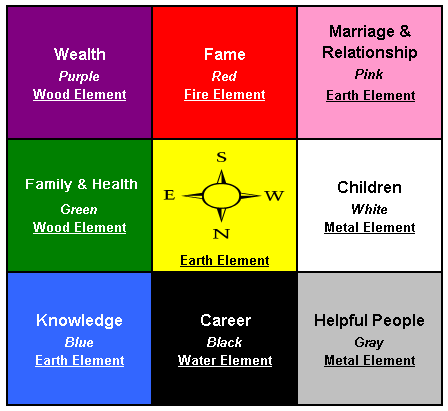
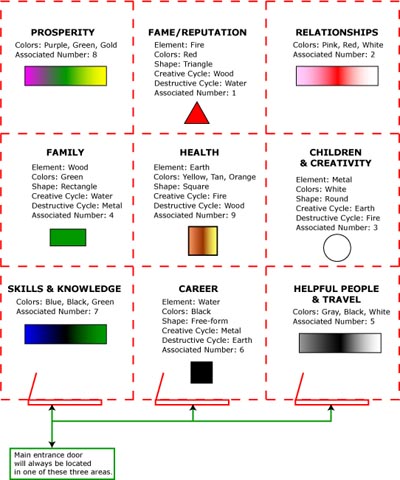
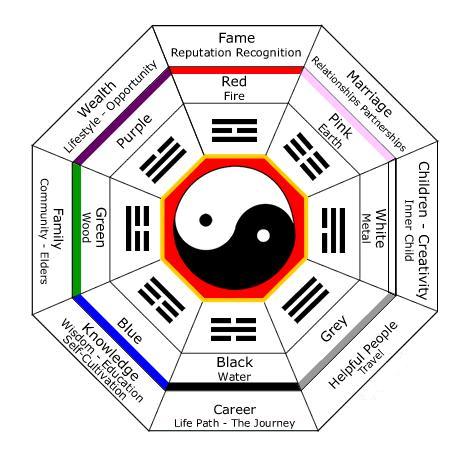
Feng Shui- Decorating Colors And Environments
Literally translated, means wind and water. But is it a philosophy, a science or an art? In essence, this ancient Chinese wisdom is all three. The effects of Feng Shui are felt in the mind, body and spirit in ways that enhance or diminish ones personal chi.
Chi (pronounced chee) is the Chinese word for energy. Chi flows through everything and is always with us. Personal levels of chi, or inner energy, fluctuate from high to low. Extreme fluctuations in this inner energy can affect your health, mood, work and relationships, so its important to maintain balanced chi. Using the art of Feng Shui, you can consciously arrange your exterior (your home) to help balance the chi in your interior (your body).
For example, have you ever visited a home and had a bad feeling that was difficult to describe? The rooms may have been flawlessly decorated, yet felt cold, tense or uncomfortable. Most likely, the longer you stayed, the more uncomfortable you felt. Your body responded to a low level of chi.
Now, think of another house youve visited that felt warm, uplifting, and inviting one where you instantly felt right at home. Again, there wasnt any specific element that made you feel comfortable. You just felt good being there. The home had a more balanced level of chi.
Take a heartfelt look at your own home. When you walk through the door, do you feel the stress of the day wash away? Do you feel self-satisfied, lighter, energetic, and motivated? Or do you feel tired, restless, out of sorts and overwhelmed? Maybe its time to do a little balancing act with Feng Shui.
Feng Shui offers added benefits worth testing. Its techniques can be applied directly to specific life situations, such as prosperity, fame, family, relationships and health. Again, its balancing your surroundings to bring about more of what you want in life. You wouldnt build a house without a blueprint. And to be effective, Feng Shui requires its own blueprint called a bagua (pronounced ba-gwa). The bagua is divided into a total of nine areas representing specific life situations.
Bagua map
As you study the bagua, look for items within specific life areas that symbolize your feelings. If youre stressed about your finances, take a close look at the room that falls in your prosperity area. Is it dark and uninviting? Does the room contain a wilting plant youve neglected or an heirloom clock that doesnt run properly? Little things you take for granted or that go unnoticed can affect your chi in big ways.
One of the greatest benefits of do-it-yourself Feng Shui is self-awareness. In addition to creating home improvements, when you apply Feng Shui principles to your home, you gain a wonderful opportunity to evaluate your lifes situations, state your intentions or goals and move into action.
Intuition, simplicity and good taste are always in tune with Feng Shui. Personalized touches (things that are especially meaningful to you) provide an added punch to your balanced environment.
Think of the bagua as a transparency, which can be placed over the floor plan of an entire house or a single room. To position the bagua correctly, look for the main door used to enter the house or room. (In some cases, the main door could be a garage or back door.) The doors position should always be located in one of three bagua areas: Skills and Knowledge, Career or Helpful People.
If you know where the areas of your home or rooms fall in place on the bagua, you can apply appropriate Feng Shui techniques to each of those areas.
Clear the Clutter
Look at your homes bagua. Are there areas or rooms that contain more clutter than others? What is the clutter saying about your life situation?
Clutter blocks chi, so its time to be brave and clean out everything you no longer want or use:
Simplicity, order and accessibility are the keys to Feng Shui organization.
Once youve decided on what you want to keep, assign each item to a specific location so youll always know where to find it.
Store the things you use most in places that are easy to reach and arrange similar items together.
Be sure that you return each item to its place after youve finished using it. Remember the old adage a place for everything and everything it its place.
FENG SHUI TIPS THE ANATOMY OF A HOUSE
Every area of a house can be viewed uniquely according to Feng Shui theory, with some rooms being more important than others just based on the amount of time spent in those locations. The psychology of color plays an important role in Feng Shui. Each area of the bagua has one or more favorite colors that enhance the life situation it represents. You may choose to devote an entire color scheme to a bagua area, but sometimes just adding a touch of color in the form of rugs, wall decorations, lighting fixtures, plants, flowers or candles can make a difference.
The Elements of Feng Shui
Before delving into their color counterparts, its helpful to understand the five elements associated with feng shui and what each stands for. They are:
Fire: Associated with fame, reputation, prosperity, abundance, love and relationships.
Earth: Associated with health.
Water: Associated with skills, knowledge, life path and career.
Wood: Associated with skills, knowledge, prosperity and abundance.
Metal: Associated with love, relationships, children, creativity, helpfulness and travel.
The elements correspond directly with life situations.
The natural elements are used individually or in conjunction with each other to build Feng Shuis Creative Cycles (increasing chi in certain areas) and Destructive Cycles (diminishing high levels of chi in particular areas).
Indoor water fountains are used to bring the water element to the correct area of the house.
The Creative Cycle Fire is associated with fame and reputation within the bagua and wood is fuel for fire. If you are looking to build your reputation or become famous, place a brick-red fireplace enhanced with decorative items made of wood within the Fame and Reputation area of the bagua. If its not practical to have fireplace, use the wood alone to create the desired levels of chi. With Feng Shui we learn to create a positive FLOW of energy in our dwellings. The use of green plants, trees, fountains, mirrors, etc direct the flow.
The Destructive Cycle – If you feel your reputation needs improving, more water or symbols of water may be needed in your fame and reputation area. You dont have to move the fireplace. Just replace wood with actual items or symbols representing water, such as fountains, pictures of lakes or items painted black (the color of water). Water douses fire, so the levels of chi are diminished.
Knicks and Knacks for Quick Fixes
Luckily, there are decorative items that can be used to balance chi in every area of the bagua and bring a whole new look to your rooms:
Lighten Up! Lamps, wall sconces and candles effectively enhance chi and promote well-being.
Reflect the good things in life. Mirrors are a powerful (and useful) enhancement in Feng Shui.
Sound ideas include chimes, bells or musical instruments that can stimulate positive chi in almost any bagua area.
Live it Up! Plants, flowers and other living things add energy and soothe the spirit.
Colors, Feng Shui and Elements
Each element is represented by a specific color, although other colors can also be associated with or correspond with certain elements
Fire
The right amount of the fire element can bring warmth, enthusiasm, energy, activity and general good fortune to any area it is placed. While too much fire can be detrimental because it is such a powerful element, a controlled level of the colors that represent it can be extremely beneficial.
Red is the primary representative of fire, but any color in that family including pink, maroon and orange are excellent choices. To a degree, any hue that is bright and energetic can be considered a fire representative, but the best choices are warm, vibrant and rich in energy. Add small doses of these colors in the form of floral arrangements or curtain embellishments, and dont neglect to allow the sunlight to flow into the room. This is by far the best and most natural element of fire energy.
Earth
The earth element is responsible for good health, security, safety, patience, honesty and stability. Its presence in the home encourages comfort and relaxation, while increasing confidence and energy. The colors representative of earth are, as one may expect, relatively down-to-earth and relaxed as opposed to vibrant and over-the-top.
Muted hues, such as olive green, brown, burnt orange, mustard, granite, stone and other nature-inspired shades, are ideal for bringing the earth element into the home. Theyre easy to work with, too; these shades are easily implemented into furniture schemes, paint colors, carpet designs and other basic items that are relatively abundant in the home.
Water
Consider the water element a source of great strength. Its renewing, purifying properties bring calm, stability and a sense of excitement and positive expectation to the home and the work place. Still water, in particularly, is a most welcome element in any home. Water is also associated with travel and adventure due to its relation to external elements like the ocean and the sky.
Though bright blue might be the typical shade associated with water, the colors feng shui is ruled by are slightly different. The water element is best represented by black, dark gray and deep blue. Too much of any of these colors is discouraged because they can essentially flood the room; in small doses, though, they bring tranquility. Try small water fountains on tables, artwork depicting calm water and, in more modern homes use black and white color palettes.
Wood
Wood is the element of prosperity and growth, in great part due to a small seeds ability to transform into a vibrant, healthy tree over time. Some may find it tricky to incorporate wood colors into their homes without falling into the earth element, but its helpful to note that the color selection does differ slightly.
In particular, purple, green and brown are outstanding representatives for wood. Though they appear earth-toned, these colors are brighter and more sociable at first glance. In small doses, purple not only encourages mental growth but also spiritual awareness. Leafy green hues are ideal, but any shade of green is a proper representative for wood.
Metal
Fans of cool metallic colors will appreciate introducing the metal element into the home. White, gold, grayand silver are excellent choices but avoid using only one of these shades. Alone they are quite harsh, but when balanced by other hues they can easily make any space immensely inviting.
Its also important to note that these hues are not necessarily neutrals; on the contrary, they exude quite a strong energy, which is another reason they should be used sparingly. In lieu of actual colors, items made from bronze, tin, aluminum, iron and similar materials are strong replacements.
Everyone can probably agree that their life could use a little more balance. Schedules, deadlines, and school activities seem to make life a little hectic sometimes. By paying attention to theelements of Feng Shui, you can achieve a sense of balance in your home and in your life.
Here is an example of a kitchen with all five elements of Feng Shui.
Metal: is represented by using metallics, circular shapes, and the color white
Water: is represented by wavy and curvy lines, and the colors blue and black
Fire: is represented in bright orange, red, and yellow colors, and sharp angled points
Wood: is represented by using actual wood, plants, and the colors brown and green
Earth: is represented by square shapes, and earthy tones such as beige and light yellow
A home or room that is well balanced, according to Feng Shui has at least one of each of the five elements within it.
The Tao teaches you that out of the inter-play of Yin and Yang all things come. Yin is the blackness which absorbs all colors and Yang the whiteness which reflects them. Ying and Yang give rise to the Five Elements and their associated colors, from which arise the whole spectrum of colors. Color is vibration, and we each respond to it on many levels, both consciously and unconsciously. And with color it is worth remembering that our conscious awareness of it is minuscule compared with its unconscious counterpart.
Color influences how comfortable we are in different environments. It affects our moods. Our use of color also affects how others perceive us. Color can be used to cure physical ailments. It can be used symbolically to enhance shapes. Also, it can make spaces appear larger or smaller according to both actual color and that colors intensity. Yes -color wields enormous power in our lives.
When we use color, we are working with light, since light contains all colors. Each color covers a particular frequency range. So every situation is different- each home and each room within it. The light quality depends on the aspect, the size of the windows and how they are decorated, artificial light sources and, of course, the size of the rooms in relation to the light sources.
The Materials and Feng Shui decorating colors
The materials we use on floors, furnishings, and decorations have the ability to both reflect light and to absorb it. We can use color to create illusions- of size (dark colors absorb more light than lighter ones) of depth (natural pigments draw light in or reflect it according to the time of day and the season) and of the movement (spots of color around the room create movement and energy there).
Light and Feng Shui decorating colors
Light quality varies around the world. In Africa, pigments, fabrics and skins in browns, beiges and terracotta, are used where the sun beats down out of a bright blue sky. In Britain, where the climate suggests an indoor life, and the light is much less vibrant, the same colors signify closing in and, used to excess, can lead to withdrawal and depression.
Similarly, the intense colors of Indian silks and the warm colors of the Mediterranean palette, have to be used with care when introduced in countries where light quality differs. However, these intense colors can play a useful role in moving the energy and, with aforethought, can be very effective.
The Five Elements and Feng Shui decorating colors
The Five Colors, along with their Five Elements, evoke the quality of the energy of each. We use them to highlight areas of our lives we wish to change, and the Bagua Diagram gives us the associated colors to be used in each geographic direction.
In Feng Shui decorating colors, balance and harmony are essential. However, we shoulddecorate our homes accordingly to our tastes or we will never be comfortable there. We should also remember the purpose of the room, and the Element associated with the direction it is in, then we can achieve true balance and harmony. It would be treating the subject superficially to simply ensure that the room has, say, a cushion in each of the Five Element colors. But a single green-stemmed, red artificial Tulip in a glass vase in the south of an all-white room would bring in the Wood element in the green stem, and the Fire element in the red flower. The Metal element is represented by the white room, the Water element by the light moving through the glass and as the medium which gave rise to the flower.
Some Important Tips
Avoid heavy doses of pastels or rich shades like red and black. Their respective energies can easily overwhelm any space and promote chaos instead of calmness.
Follow the percentage plan if youre new to feng shui color planning: Lend most rooms anywhere between 50 to 90 percent of safe color (or those hues that are quite natural) and between 10 to 50 percent of risky color. You may choose to use the more adventurous shades as accents, instead.
Keep in mind that color is doubly important in designing a room. While the element it represents is important, it is also an aesthetic detail that should make sense in the general outline of the room. Use color judiciously and wisely, but dont be afraid to mix it up with objects (such as mirrors, candles and plants) to create the perfect balance of all elements.
Feng Shui- Carpets and Floors
Floors should be level so as not to cause equilibrium problems for the occupants. It is less important if the flooring is wood, stone, or carpet, but the color of the carpet can change the energy of a room. As an example, a green carpet is the wood element and a gray carpet is the metal element. A carpet should blend with all the elements of the room, but the ruling element (ie: wood if the room is in the north) should help you choose the color and pattern. A rug can activate healthy energy flow into and through your living space by highlighting specific parts of a room.
Feng Shui Decorating with Color
Psychologically, color is powerful and can be used to enhance Chi. While many colors have common associations between the Chinese and Western worlds there are some notable departures, such as blue and white. This does not mean that a color with negative associations to the Chinese can not be used in a positive sense in the Western world, as Feng Shui is about making ones environment balance, not completely recreating it, otherwise one risks creating an environment unsuited to those who must live and work in it.
Color associations
Blue is cool and calming but due to its associations as the secondary mourning color to the Chinese it is seldom used as a primary color. Conversely, in the Western world, blue is generally perceived as a healing color and therefore a popular choice when a relaxing environment is desired. Blues positive associations are trust, faithfulness and stability. Negatives are suspicion and melancholia. Blue is peaceful and soothing and is linked with spirituality, contemplation, mystery and patience.
Feng Shui Living Room
Blue can be used in meditation rooms, bedrooms, therapy rooms, and as a means of enlarging space, but not in family rooms, dining rooms and studies.
Purple, through its perception as simply a deep form of red, is generally grouped with red as an auspicious color, and like red, a color to use sparingly. Purple encourages vitality, purple is impressive, dignified and spiritual. Positive associations are excitement, passion and motivation. Negatives are mournfulness and force. Use in bedrooms and meditation rooms, but not bathrooms or kitchens.
Red is an auspicious Yang color, associated with celebrations, good luck and an ability to banish negative Chi. Best used in small amounts as it can increase aggressiveness and hyperactivity. The color is associated with warmth, prosperity and stimulation, but also anger, shame and hatred. Ideal for those who are perhaps a little under-aggressive to improve response rates. Red is stimulating and dominant. It reduces the size of rooms and increases the size of objects. Red is useful as an accent color. It is not suitable for dining rooms, childrens bedrooms, kitchens or workshops.
Black is mysterious and independent. It carries with it associations of money but needs to be used sparingly to avoid a depressive effect. Blacks positive qualities are intrigue, strength and allure, while its negatives are death, darkness and evil. Often used in teenagers rooms and bedrooms, it should NOT be used in young childrens rooms, therapy rooms, studies or living rooms.
Pink represents love, happiness and romance the ideal color to use in the master bedroom if more romance is desired. Pink is linked with purity of thought and has the positive associations of happiness and romance with no negatives. Suitable for bedrooms, but not kitchens or bathrooms.
White is perceived by the Chinese to be the major mourning color, whereas the Western world perceives white to be a celebratory color, cleansing and pure. White symbolizes new beginnings, purity and innocence. Whites positive qualities are cleanliness and freshness, its negatives: cold, lifelessness and starkness. Use for bathrooms and kitchens, not suitable for childrens rooms and dining rooms.
Green symbolizes hope, growth and fresh energy, a positive color for the digestive system that can be cleverly represented by the use of plants in wood or fire element dominated kitchens and dining rooms. A symbol of growth, it is an auspicious color to include on the stationery and livery of new businesses. Green symbolizes growth, fertility and harmony. It is restful and refreshing. Greens positive associations are optimism, freedom and balance. Its negatives are envy and deceit. Good in therapy rooms, conservatories and bathrooms, but not in family rooms, playrooms or studies.
Yellow is associated with enlightenment and intellect. It stimulates the brain and aids digestion. Yellows positive qualities are optimism, reason and decisiveness, while its negatives are craftiness, exaggeration and rigidity. Yellow denotes power, intelligence and longevity bringing with it wisdom, tolerance and patience; ideal for areas such as libraries, where one wishes to improve ones wisdom and understanding.. Suitable for hallways and kitchens, but not for meditation rooms or bathrooms.
Orange is a powerful and cheerful color, orange encourages communication. Its positive qualities are happiness, concentration and intellect, and its negative is rebelliousness. Use in living or dining rooms and hallways, but not in small rooms or bedrooms.
Brown suggests stability and weight. Its positives are safety and elegance, while its negatives are dinginess, depression and aging. Good for studies, but not for bedrooms.
.
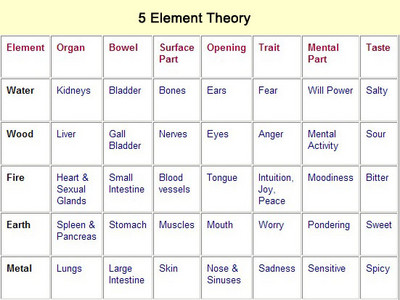
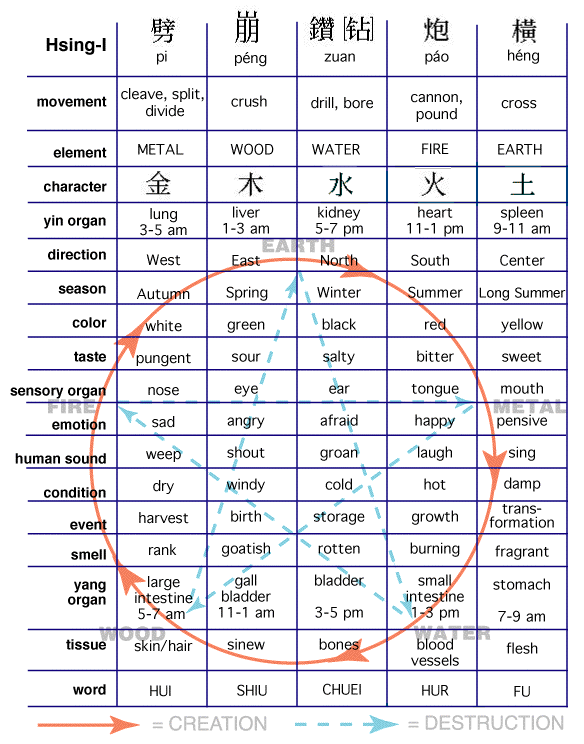
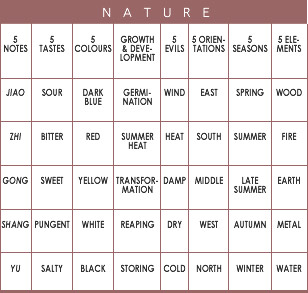
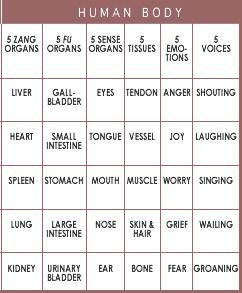
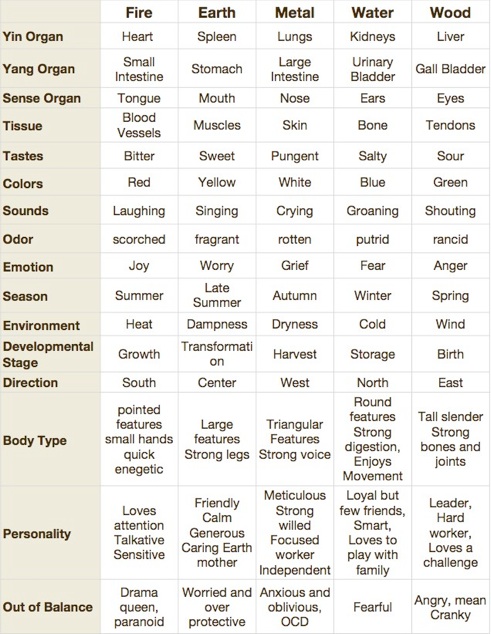

![]()

Quick Links
- Home
- About Us
- Water Element- Self Urine Therapy
- About Urine Therapy
- Introduction
- Urine Test
- Scientific Information
- How to Do Urine Therapy
- Information on Urine Therapy
- WORLD CONFERENCE ON URINE THERAPY
- VDO on 6th world conference
- HEALTH CENTERS AND WEB SITES ON UT
- BOOKS ON URINE THERAPY
- AUDIO ON URINE THERAPY
- VIDEO ON URINE THERAPY
- PICTURES on UT
- Urine Therapy Federation of India
- Members of UTFI
- Pictures UTFI
- SELF EXPERIENCES & CASE HISTORY
- Common Questions
- Urine Therapy By
- Natural Healing by Sunil Munot
- UT BY COEN VAN DER KROON
- UT BY MARTHA CHRISTY
- UT BY MARTIN J LARA
- UT BY SWAMI SATYANANDA SARASWATI
- UT BY DEVENDRA VORA, M.D.
- UT by Mike Crowley
- UT By Renee Sunsprit
- UT BY NATALIA PERERA
- UT BY FLORA PESCHEK-BÖHMER PH.D.
- UT BY BIOMEDX
- UT BY DR.G.K.THAKKAR – SHIVAMBU GITA
- UT BY SHIRLEYSWELLNESSCAFE.COM
- UT BY JOHN F. KELLY
- UT BY AHMEN HEAVEN
- UT BY AGAMA YOGA
- UT BY WALTER LAST
- UT BY ALLDEAF.COM
- UT By Cameron Karsten
- Ut by Damar Tantra
- UT By Tony Scazzero
- UT Information by Don Orina
- Best Drinking Water
- SEA WATER
- About Urine Therapy
- Earth Element
- Fire Element
- Air Element
- Sky Element
- Sixth Element
- Chronic Diseases
- Cleaning Elements
- Important links
- Jain links
- Visitors Mail
- Gallery
- Video
- Our Inspiration
- Contribution
- Contact Us

